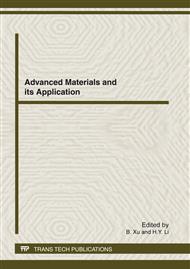p.155
p.160
p.165
p.169
p.175
p.180
p.184
p.189
p.193
Piezoelectric Power Transceiver with Ultra-High Isolation
Abstract:
An electric power transceiver with ultra-high isolated is presented in this paper. Two pieces of piezoelectric elements serving as energy transmitter and energy receiver are attached to two ends of a slender glass beam, respectively. The slender glass beam with dimensions of 500 mm(L)×20 mm(W)×2 mm(T) is used as the media of vibration to realize wireless power transmitting. A distance of 396 mm between the two piezoelectric elements ensures an ultra-high isolation between the input and output circuit. The system is designed and analyzed by finite element method. Experiment tests are also conducted to investigate the performance of the transceiver. With a matched load resistance of 500 Ω, the transceiver can work continuously and stably with an output power of 3 W (no heat sinking) and an efficiency of 60%.
Info:
Periodical:
Pages:
175-179
Citation:
Online since:
February 2012
Authors:
Keywords:
Price:
Сopyright:
© 2012 Trans Tech Publications Ltd. All Rights Reserved
Share:
Citation:


